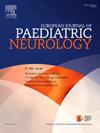Treatment of leukodystrophies: Advances and challenges
IF 2.3
3区 医学
Q3 CLINICAL NEUROLOGY
引用次数: 0
Abstract
Leukodystrophies, a group of genetic disorders primarily affecting brain white matter, were once considered untreatable. Advances in MRI and genetic diagnostics now allow most patients to receive a genetic diagnosis, and emerging treatments are shifting the field from therapeutic nihilism to cautious optimism. Allogenic haematopoietic stem cell transplantation (HSCT), used since the 1980s, has shown efficacy in specific leukodystrophies, such as adrenoleukodystrophy and metachromatic leukodystrophy, when administered early. Gene therapy has become a viable option, with ex vivo approaches like atidarsagene autotemcel providing promising outcomes for early-onset MLD. Trials for gene replacement and antisense oligonucleotide therapies are ongoing for several leukodystrophies, including Canavan disease and Alexander disease. Certain treatments, such as guanabenz for Vanishing White Matter, target disease-specific dysregulated molecular pathways. Despite these advances, challenges remain, including the ultrarare nature of most leukodystrophies, limited natural history data, high treatment costs, and barriers to accessibility. Future developments, including newborn screening and close international collaboration, aim to enhance early diagnosis, refine treatment timing, and expand access to innovative therapies.
脑白质营养不良的治疗:进展与挑战
白质营养不良症是一组主要影响脑白质的遗传性疾病,曾被认为是无法治愈的。核磁共振成像技术和基因诊断技术的进步使大多数患者能够接受基因诊断,而新兴的治疗方法正在将这个领域从治疗虚无主义转变为谨慎的乐观主义。自20世纪80年代开始使用的同种异体造血干细胞移植(HSCT)在早期给予特异性白质营养不良(如肾上腺白质营养不良和异色性白质营养不良)时显示出疗效。基因治疗已经成为一种可行的选择,体外方法如atidarsagene autotemcell为早发性MLD提供了有希望的结果。基因替代和反义寡核苷酸治疗几种白质营养不良的试验正在进行中,包括Canavan病和Alexander病。某些治疗方法,如用于白质消失的胍苯胺,针对疾病特异性失调的分子途径。尽管取得了这些进展,但挑战依然存在,包括大多数脑白质营养不良的罕见性、有限的自然史数据、高昂的治疗费用以及可及性障碍。未来的发展,包括新生儿筛查和密切的国际合作,旨在加强早期诊断,优化治疗时机,扩大获得创新疗法的机会。
本文章由计算机程序翻译,如有差异,请以英文原文为准。
求助全文
约1分钟内获得全文
求助全文
来源期刊
CiteScore
6.30
自引率
3.20%
发文量
115
审稿时长
81 days
期刊介绍:
The European Journal of Paediatric Neurology is the Official Journal of the European Paediatric Neurology Society, successor to the long-established European Federation of Child Neurology Societies.
Under the guidance of a prestigious International editorial board, this multi-disciplinary journal publishes exciting clinical and experimental research in this rapidly expanding field. High quality papers written by leading experts encompass all the major diseases including epilepsy, movement disorders, neuromuscular disorders, neurodegenerative disorders and intellectual disability.
Other exciting highlights include articles on brain imaging and neonatal neurology, and the publication of regularly updated tables relating to the main groups of disorders.

 求助内容:
求助内容: 应助结果提醒方式:
应助结果提醒方式:


